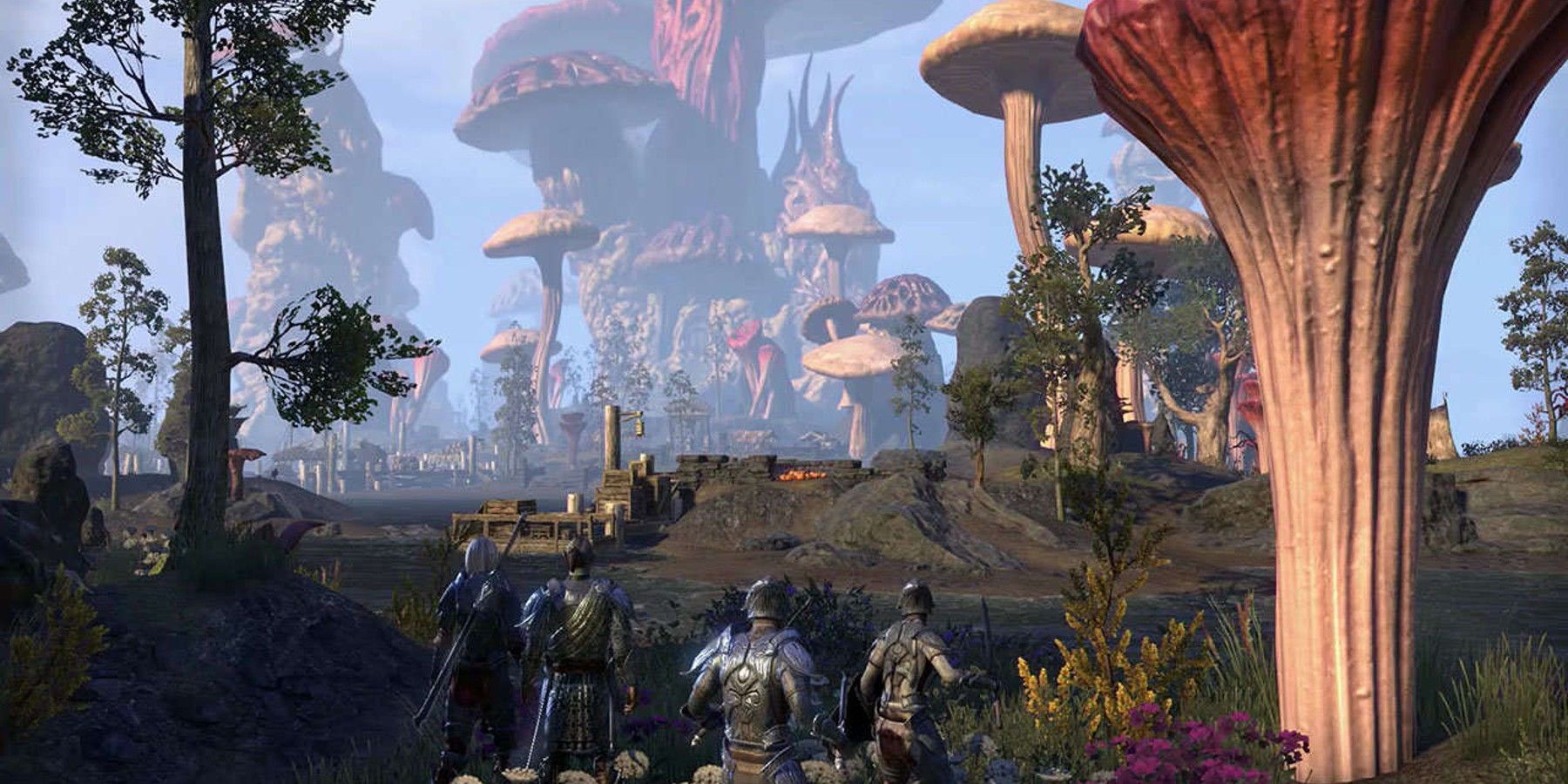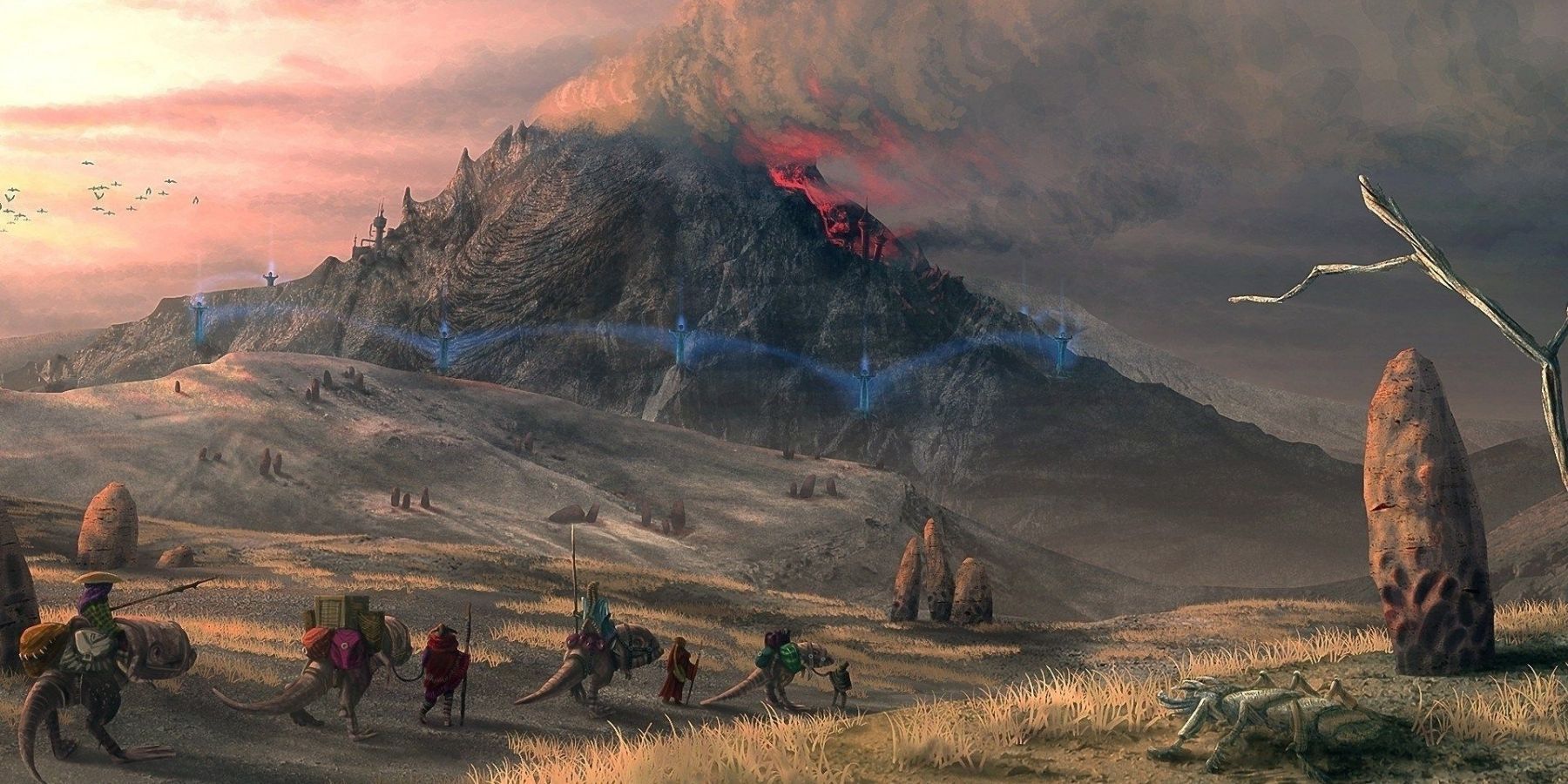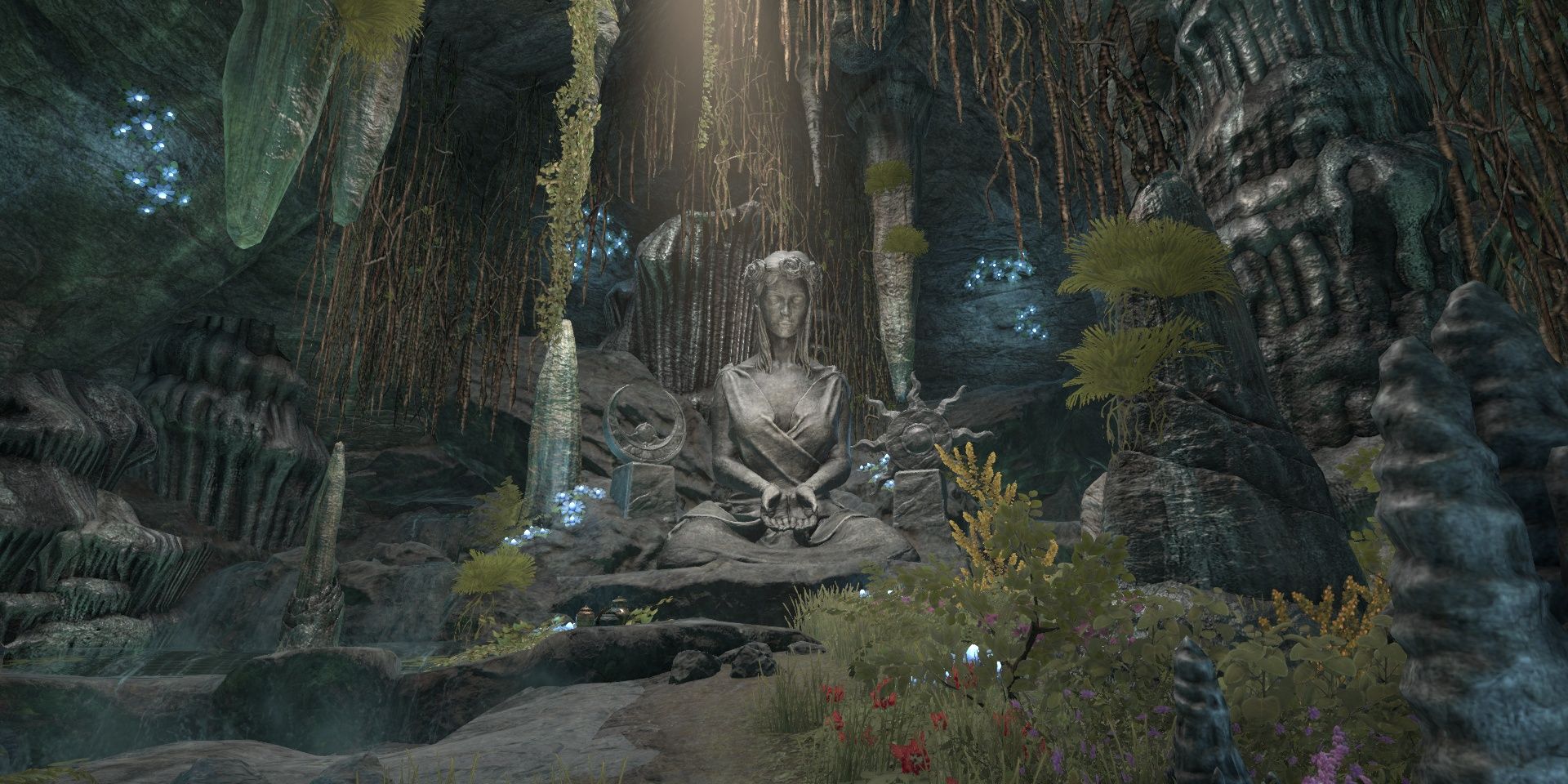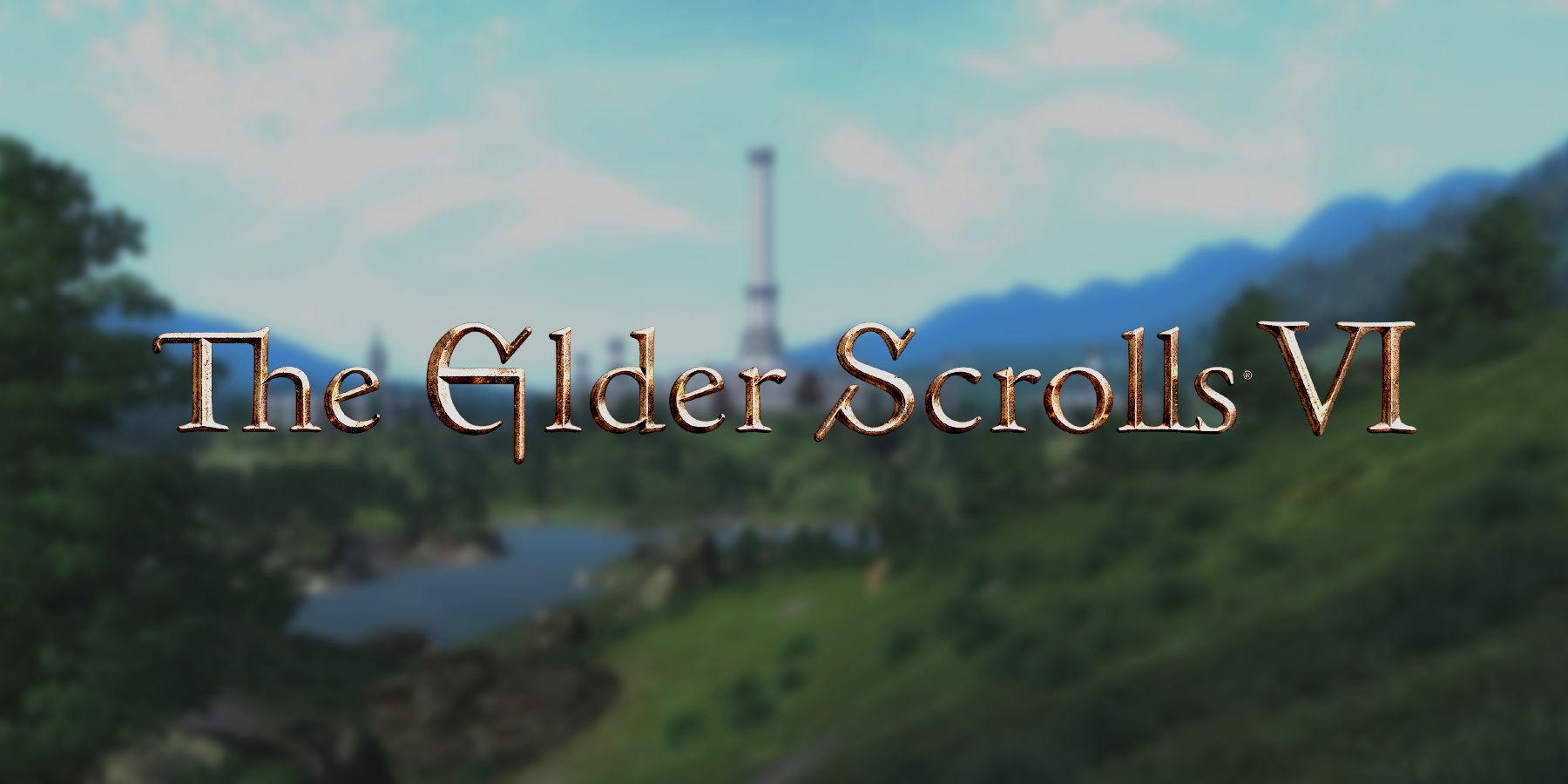There are a handful of series that have become so ubiquitous to the world of gaming that they have come to define what their respective genres represent. Some of these series are approaching or have surpassed two decades of life, with new installments on the horizon. One such series is The Elder Scrolls, Bethesda's open-world action RPG franchise, whose first installment launched way back in the nineties, with The Elder Scrolls 6 currently in development. One of the series' most memorable entries was The Elder Scrolls 3: Morrowind, which was praised for its visuals, scope, and originality upon release.
The Elder Scrolls 3: Morrowind was a breath of fresh air when it launched in 2002, and opened up the world of fantasy RPGs. By no means a perfect game, Morrowind's design and ambitions made up for its faults, and players could forgive the glitches when confronted by the freedom and flexibility of the game. While many of Morrowind's systems and its game engine might not hold up particularly well today, especially compared to some recent releases, it's undoubtedly still a great game. It's influenced not only later games in the Elder Scrolls series, but also other open-world fantasy RPGs, and helped to define what that genre should be.
Morrowind: A Densely-Packed World Full Of Detail
Morrowind may suffer by comparison in some ways to later games in the Elder Scrolls series, but it's arguably still the best in the franchise. It was weird and wonderful in all the best ways, and didn't hold players' hands in the way that contemporary and later games tended to do. There were no handy map markers to follow or navigational aids to rely on; Morrowind was about exploration in every sense of the word. It may look a little dated today, but at the time of release, the environmental design of Morrowind was breathtaking. Getting lost (quite a common occurrence in the game's vast open world) was a pleasure more than it was an annoyance.
It may have had some recognizable features of western medieval and fantasy tropes in its design and story, but Morrowind also introduced some slightly more otherworldly elements that separated it from anything that had come before, as well as a lot that came afterward. Its use of shells and proliferation of oversized mushrooms in architecture and across landscapes added a touch of the fantastical to Morrowind's environments. The memorable and slightly monstrous Silt Striders certainly made a lasting impression. Morrowind was just plain weird in many ways, but that's one of the things that made it so unique.
Pushing The Boundaries Of A Fantasy Game
However, there was more than just the visuals and crazy characters that inhabited its world that set Morrowind apart. What feels fairly revolutionary about the game is its sparsity. There is no useful minimap, no helpful HUD, only a journal that players will need to continually reference to piece together clues and environmental indicators for quests. It puts players at the center of an epic adventure, and truly feels like they're a hero forging their own story. This may not have made the game as accessible or easy to follow as later titles, but it was a challenge that was both rewarding and fittingly demanding.
Morrowind's lack of guiding features meant that players had to do a little stumbling around to find a place, but luckily there was plenty for them to do along the way. The game had a sense of humor, with its strange and even silly characters, happenings, and quests existing alongside more serious fantasy elements. Although fast travel wasn't really a thing in Morrowind, players could levitate, turn invisible, or jump large distances to help them get across the massive map in fun and interesting ways. The gameplay was creative and occasionally crazy, unhindered by Skyrim's bleaker realism or Oblivion's focus on more traditional RPG features.
There were secrets to uncover, NPCs to meet, and some truly mad items and gear that helped to take the gameplay and combat in surprising directions. Like many Bethesda titles, the modding community descended on Morrowind and added so many elements to its core mechanics, but unlike some other Elder Scrolls titles, the game didn't necessarily need them to provide hours of player-focused fun. It helped to elevate fan expectations of what an open world could (and should) be, and even 20 years later, there are some modern titles in the same genre that don't deliver the same way that Morrowind did.
The Future Of The Elder Scrolls
Skyrim has been an incredibly popular game, with lasting appeal thanks to its expansive world and an inexhaustible amount of mods, and its sequel has been highly anticipated for years. While it's been confirmed that the next game is in the works, Bethesda has been incredibly quiet about it in recent years.
With the upcoming release of Bethesda's first new IP in over two decades, Starfield, on the horizon, the studio has had its hands full of late. However, once Starfield releases in November, Bethesda will once again set its sights on the incredibly successful Elder Scroll franchise. Not much is known about the upcoming Elder Scrolls 6, and fans have been left to speculate heavily on where it will be set and what it will entail.
There have been some heavy rumors of a Hammerfell setting, thanks to a tweet from the Elder Scrolls Twitter account, but this has yet to be confirmed. Once part of the Tamrielic Empire, Hammerfell is home to the Redguards, a race of skilled human warriors who have appeared throughout the Elder Scrolls series. Apart from a very brief teaser trailer and some veiled hints, Elder Scrolls 6 remains a mystery.
Skyrim was released over a decade ago, and while it's an excellent game, the series needs to evolve past it and deliver something more elevated to keep fans onboard. In order to stand out, the next installment should embrace some of the weirdness of Morrowind, and take risks like the previous title to push the boundaries of what an Elder Scrolls game can be.
The Elder Scrolls III: Morrowind is available for PC and on the original Xbox.







